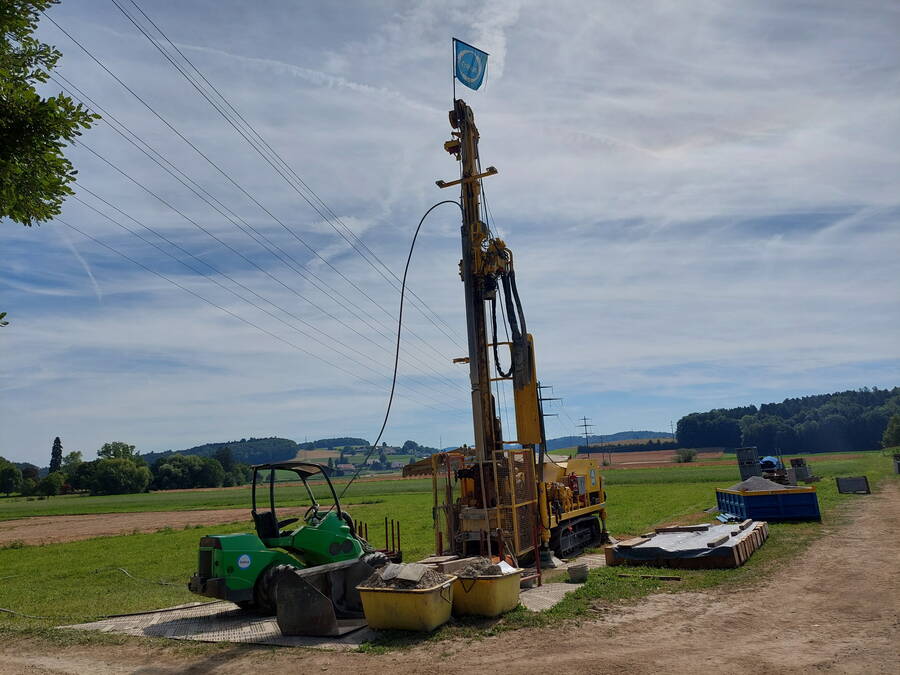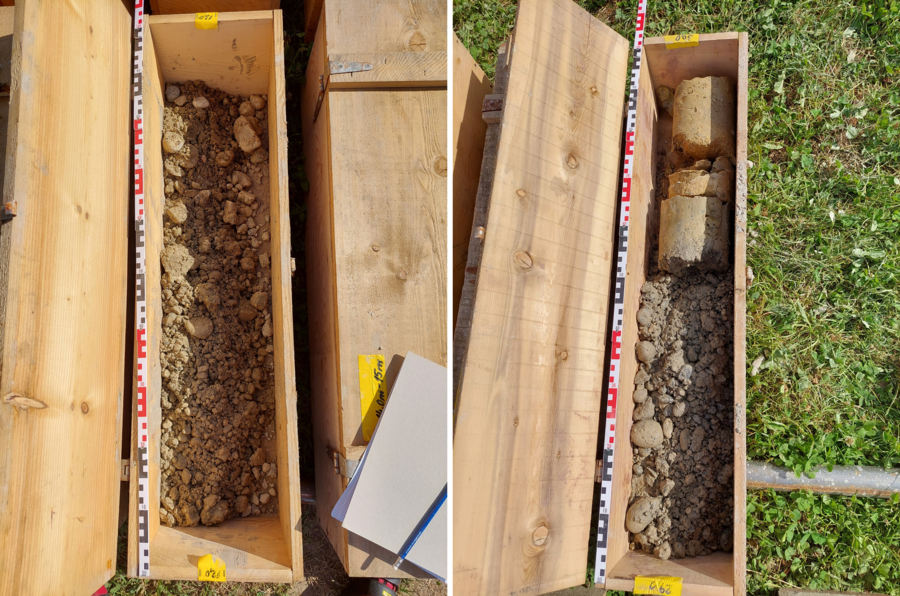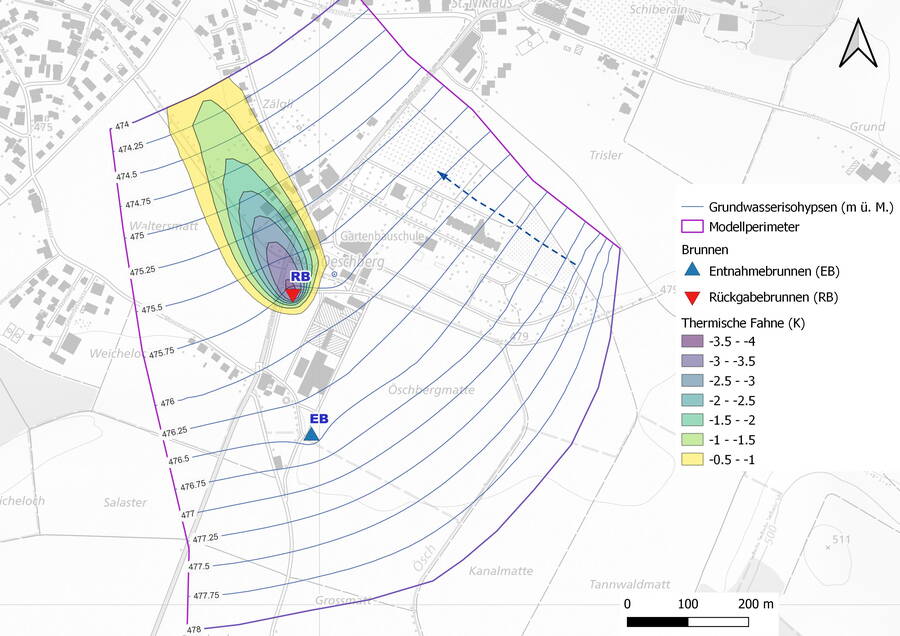Preliminary hydrogeological investigation for large-calibre geothermal heat utilisation
Koppigen, BE
47° 07′ 33″ N, 7° 36′ 36″ E
2020 - 2022
When it comes to heating the large greenhouses, as well as other buildings, of a horticultural school, considerable services are clearly required. The Oeschberg horticultural school in Koppigen (canton of Bern) wishes to use renewable energy sources in their new construction project, exploiting heat from underground sources rather than relying on fossil fuels. However, access to the large amount of groundwater required to heat the greenhouses requires extensive preliminary (hydro)geological clarifications, as well as a reliable, sizable and usable aquifer.
The energy consumption of the greenhouses and other buildings of the Oeschberg horticultural school is high, at around 2,400 MWh per year, with a peak requirement of 430 kW. As part of the planned renovation and new construction, it was essential to examine the possibility of using renewable energy for heating and thus becoming independent of fossil fuels.
Replacing the oil heating system would save around 750 tonnes of CO2 per year. An analysis of the existing geological showed that there is a groundwater-saturated glacial gravel body in the subsurface with a thickness of approx. 30 m.
In addition to being responsible for assessing the construction ground for the project, GEOTEST Ltd was commissioned with the preliminary investigation of the potential use of groundwater for heating purposes. GEOTEST Ltd. has also been involved in construction supervision during the subsequent work phases. In view of the considerable energy requirement, only a large-calibre well system could possibly extract the groundwater at the required rate of around 3,000 L/min and then return it to the ground. Consequently, in summer 2022 the local geological and hydrogeological conditions were explored with boreholes and test filter wells, and the yield of the aquifer at the project site was tested through pump seepage trials.
The composition and permeability of glacial gravel deposits can vary. Flowmeter measurements in the filter pipe were therefore used to determine the areas with the highest permeability in the deepest parts of the saturated aquifer, which is about 27 m thick. Further, the groundwater levels were continuously monitored for months using groundwater loggers with automatic remote data transmission.
Based on calculations and models, the definitive large-calibre well structures could ultimately be dimensioned optimally for the required groundwater volume.




